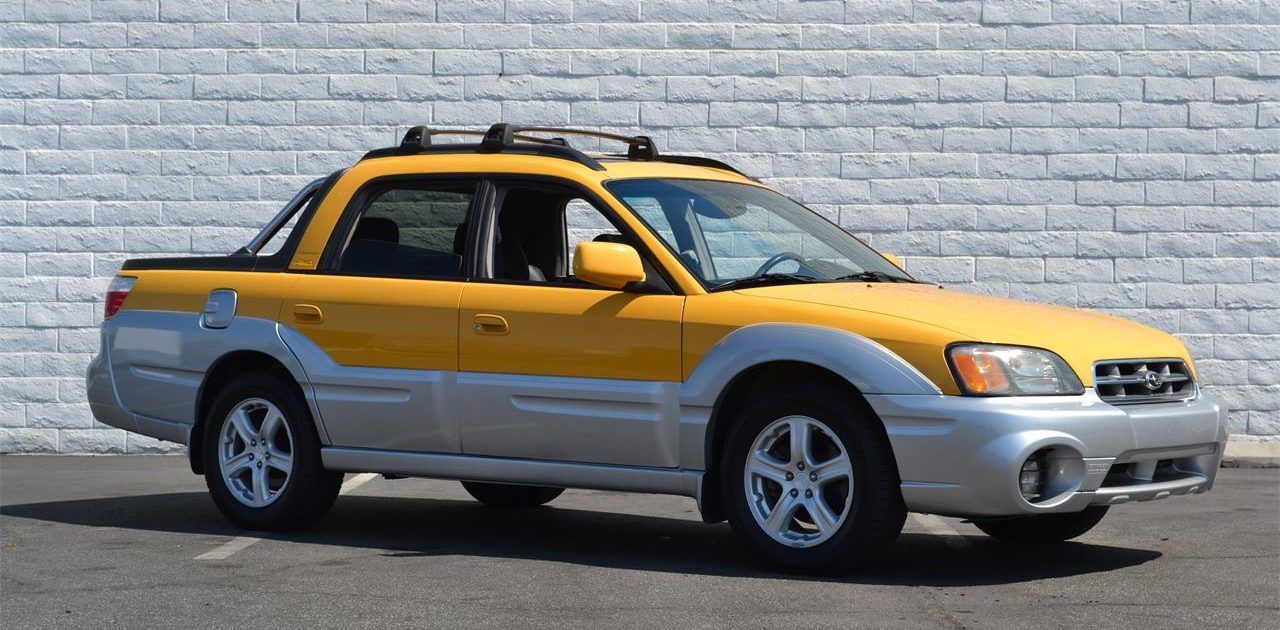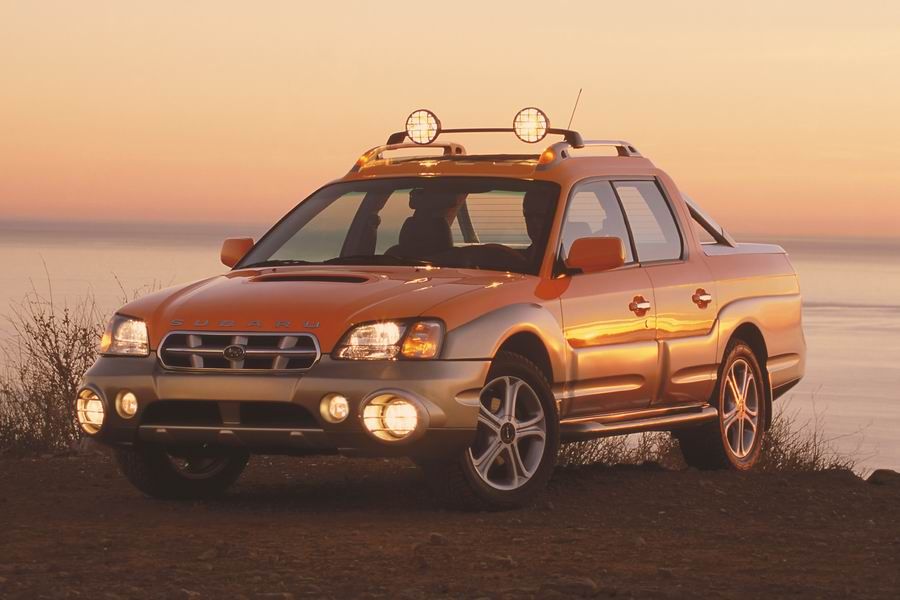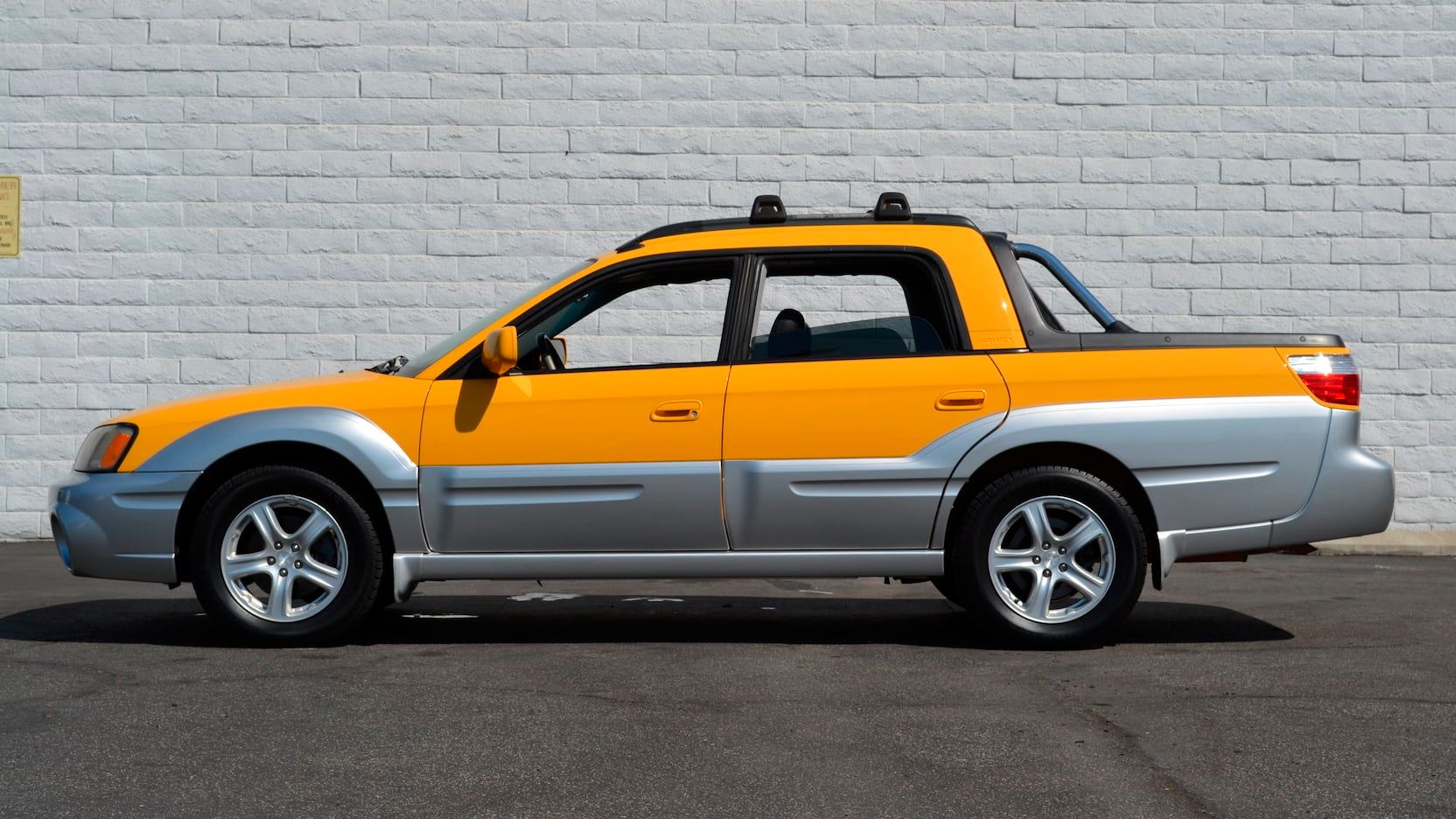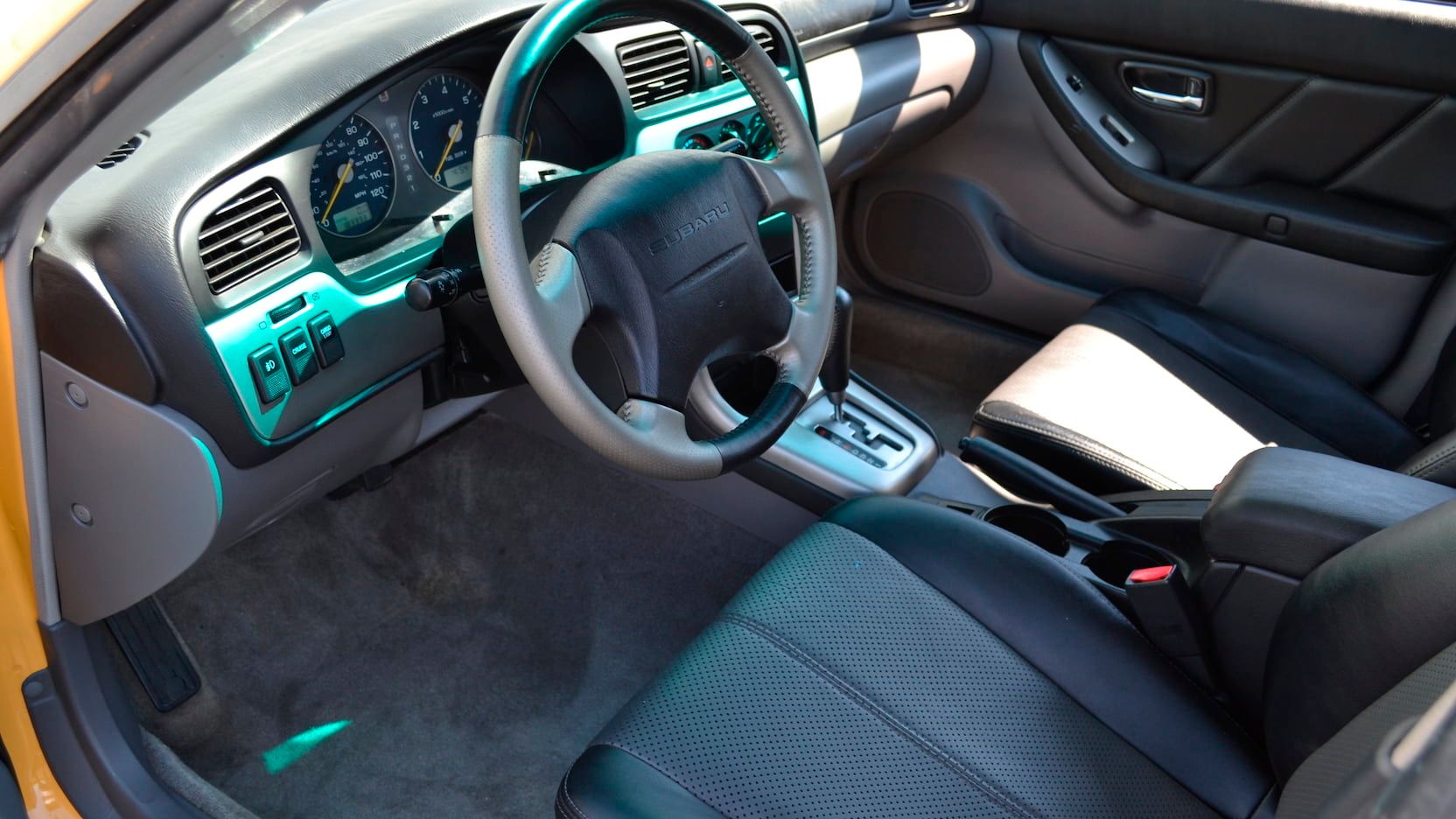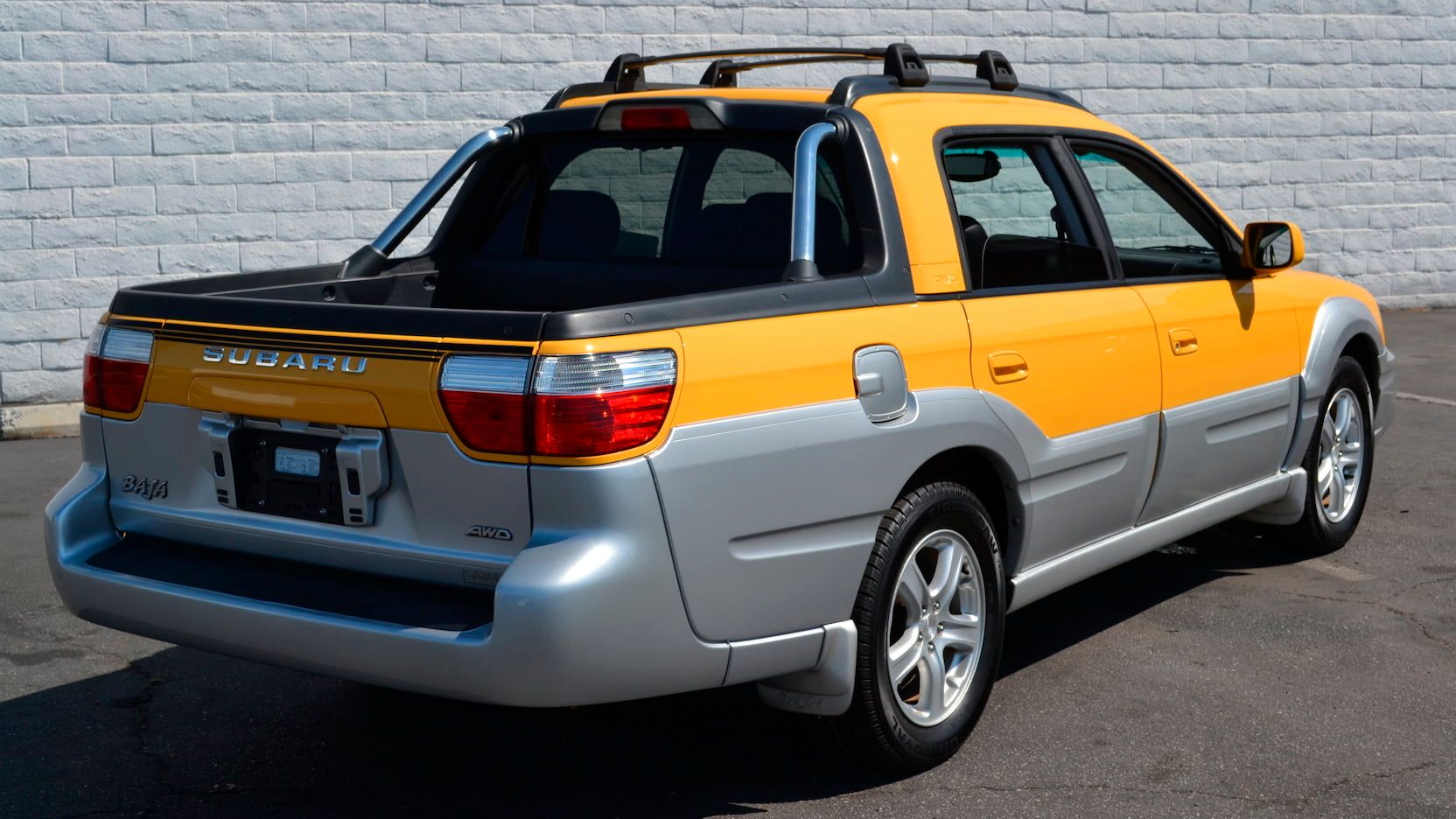Subaru tends to stand out, being the niche-focused underdog of the major Japanese automakers. Today, Subaru has come a long way from their quirky past and is a genuinely iconic automaker with strong sales thanks to a couple of things in particular. Among those things are practical daily drivers that are ready for adventure, as well as legendary rally-bred performance cars like the WRX STI. Pickup trucks, however, are not something Subaru is known for, but they did indeed attempt to make one, twice.
Their first attempt was in the '70s, taking the GL and turning it into a little pickup known as the BRAT. This was a decent success and a fun little truck, seeing production up until the early '90s. The second attempt was this, the Baja, using a similar formula but with the Outback.
Much less fortunate though, the Baja lasted just 4 years in production and was a complete sales failure, ending up being remembered today as a strange and rather ugly machine in league with contemporaries like the Pontiac Aztek.
From Concept To Reality
Growing their brand image through the '90s, Subaru was seeing a huge rise in North American success thanks to their 1st and 2nd generation Outback selling like hotcakes. As with any other manufacturer, building hype for the future with concept cars is the natural thing to do, and that's what Subaru did at the 2000 LA Auto Show, debuting the ST-X (pictured above) as a unique lifestyle pickup truck with a host of distinct features - including a very odd design. Based on the existing Outback, the ST-X did what few concepts manage to do and made it to the road relatively unchanged, entering production as the Baja in 2002 for the 2003 model year.
With features like the rear "switchback" gate adding a small door to the pickup bed, the ST-X garnered a fair amount of attention, but the greatest proposition was its basis on the Outback, offering comfortable and competent on-road handling, with rugged off-road capabilities, and now a pickup bed for open-air cargo space. Made in the USA at Subaru's Lafayette Indiana factory, the resulting Baja was only sold in the USA, Canada, and Chile.
An Outback Without Its Back
While nearly identical to the same year Outback mechanically, the Baja had several distinct points when it came to the exterior and interior design. The most obvious is the pickup bed - which necessitated a new rear end design, but further differences include new body cladding which is wider around the fenders, a new and more aggressive front bumper, as well as unique 5-spoke 16" aluminum wheels. As well, the metal bars in the pickup bed weren't just for looks, named "sport bars" by Subaru, they provided actual structural support, compensating for the drop in frame rigidity by the open pickup bed.
Sadly missing the ST-X concept's supercharged engine, the Baja only had one engine for its first year - the underwhelming, head gasket failure-prone EJ251 Boxer-4 making just 165 hp. For 2004 though, the Baja got a healthy increase in power with a new turbocharged option giving it the 210 hp EJ255 Boxer-4. Transmission-wise, you could get the Baja with either a solid yet unexciting 4EAT 4-speed auto, or a 5MT 5-speed manual, both of which paired to Subaru's excellent full-time symmetrical AWD system.
Performance wasn't the Baja's focus, as with the EJ251 it could do a 0-60 mph time of 10.5 seconds, and with the EJ255 it was capable of a 7.3 second 0-60 sprint. Like the Outback, the Baja's focus was on and off-road versatility, with lifted suspension giving the 2003 Baja 7.3" ground clearance, and for 2004, the Baja got one more inch of ground clearance bringing it to 8.3". Handling is another strong point, with soft and comfortable, yet well-composed suspension and steering that is precise and direct. With AWD and a viscous limited-slip diff as well, the Baja is a lot of fun to throw around corners or through twisty dirt trails, but isn't a car for those who want outright thrills and speed.
Good Car, Substandard Truck
With its Outback roots, the Baja was great for daily driving and off-road use, but when looked at as a truck, it had many downsides. The main problem was that it was a unibody car-based design known as a "ute" - and ironically wasn't sold in Australia or New Zealand where utes are commonplace, and Subaru as well had an existing market presence. Inherently less strong at truck duties than a body-on-frame design, the Baja just wasn't competitive against compact trucks like the Ford Ranger of the time. With the Ranger being able to tow 9,500 lbs and haul 1,260 lbs, the Baja couldn't match it with a tow rating of 2,400 lbs and hauling capabilities of 1,070 lbs.
Even worse was the bed, designed as a non-standard size of 41.5", the compact Ranger's short-bed put it to shame at 72”. While the switch gate did expand what could be carried, it only allowed for slim items like wood 2x4s, and would have them intrude on the interior - a bed extender that was a simple metal cage was offered as an option though.
Focusing on its car side though, the Baja was surprisingly good for the time, with an interior design almost exactly the same as the Outback, and decently competitive features. Leather upholstered door cards and leather seats with embossed Baja logos came standard along with driver-side power adjustments, a leather shift knob, a power sunroof, a CD player with an 80-watt amp, a unique blue and yellow gauge cluster, as well as a bed cargo light all came standard. Options included sport lights, various cargo nets, Baja branded carpets, the bed extender, upgraded speakers, and a variety of other accessories.
Pricing, And The Baja’s Demise
Initially offered in only one trim, a lower price "sport" trim was introduced later in the Baja's first year of production. Ditching the leather seats for cloth, replacing the split headlights with a simpler design, and offering black door handles and mirrors rather than body color matched. Despite everything, even the lower-priced trim couldn't save the Baja, and it failed rather objectively. Projecting sales of 24,000 units per year, Subaru's own mark was missed, and the Baja sold only around 30,000 for its entire 2003 to 2006 production run. Furthermore, with the Legacy/Outback being updated for the 2004 model year, the previous gen-based Baja now looked outdated in showrooms alongside its hilariously weird design.
Pricing also did the Baja few favors, with a base price of $25,000 in 2003, the Baja was the equivalent of $35,000 in 2021 money. The 2003 Outback for comparison had a base price of $19,220, and a 2003 Ford Ranger's most basic spec cost $12,225. Compromised as a truck, and not attracting Outback buyers with its exposed cargo area, the Baja's marketing was also limited and strange - attempting to dub the Baja a "multiple choice vehicle." Initial reviews as well crushed the Baja's chances of success, labeling it as a "controversial fashion statement with limited utility."
In the end, the Baja's failure has been redeemed with a somewhat happy ending, as today it has a small but dedicated cult following, and also has held its value much better than Outback models of the same year. Average prices today tend to range from around $5,000 to $13,000 for a non-turbo model (depending on condition and transmission), while turbo Bajas typically cost upwards of $10,000 in decent shape - a turbo Baja with a manual is the rarest of them all and can cost as much as $20,000 with low mileage - as of writing, there's a manual turbo Baja with 75,000 miles listed for $16,900.
Sources: Car And Driver, Edmunds, Car Gurus, All We'll Drive

